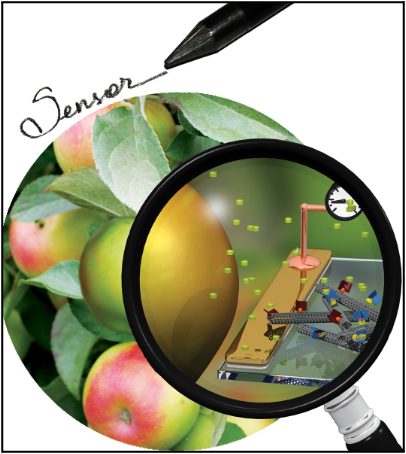Professor Timothy Swager
Kolthoff Lecture #2
Professor Timothy Swager
Department of Chemistry
Massachusetts Institute of Technology
Host: Professor Marc Hillmyer
Translating Chemical Reactions and Catalysis to Nano-Electronic Sensors
This lecture will detail the creation of ultrasensitive sensors based on chemiresistive mechanisms with carbon nanotubes (CNTs). A central concept that a single nano- or molecular-wire spanning between two electrodes would create an exceptional sensor if binding of a molecule of interest to it would block all electronic transport. Nanowire networks of CNTs provide for a practical approximation to the single nanowire scheme. These methods include abrasion deposition and selectivity is generated by covalent and/or non-covalent binding selectors/receptors to the carbon nanotubes. Sensors for a variety of materials and cross-reactive sensor arrays will be described. A current limitation to most, it not all sensors, is chemical selectivity. Synthetic receptors can give some selectivity and when they have 3D structures can be highly specific for recognition of a molecule. However, translating complex molecular constructions into strong readable sensory signals is challenging. I will give multiple examples of how established chemical reactions that occur in solution can be used to create highly specific and sensitive sensors. There is a vast opportunity in translating the products of synthetic and catalytic chemistry into selective chemiresistive sensors. I will highlight the utility of CNT-based gas sensors for the detection of alkenes and other gases relevant to agricultural and food production/storage/transportation are being specifically targeted and can be used to create systems that increase production, manage inventories, and minimize losses.

Research
Professor Timothy Swager's research is at the interface of chemistry and materials science, with specific interests in carbon nanomaterials, polymers, and liquid crystals. Reseachers in his group are interested in a spectrum of topics with an emphasis on the synthesis and construction of functional assemblies. Molecular recognition pervades a great deal of their research. Chemosensors require recognition elements to discriminate chemical signals. Electronic polymers are one of the areas that the Swager group is well known for having made many innovations. They are constantly developing new electronic structures, properties, and uses for these materials. Recently, Swager's group launched an effort to create functionalized carbon nanotubes and graphenes. Researchers have advanced new chemical methods for their functionalization and utilization in electrocatalysis and chemical and radiation sensing. In the area of liquid crystals, they make use of molecular complimentarity and receptor-ligand interactions to provide novel organizations.
Professor Swager
Professor Swager joined the Department of Chemistry at Massachusetts Institute of Technology in 1996, holding the title of John D. MacArthur Professor of Chemistry. He is also director of the Deshpande Center for Technological Innovation. He is a member of the National Academy of Sciences and American Academy of Arts and Sciences. He earned his Bachelor of Science in chemistry from Montana State University, and his doctorate at the California Institute of Technology. He was a post-doctoral fellow at MIT. Before joining the faculty at MIT, he was a professor at the University of Pennsylvania.
Kolthoff Lectureship in Chemistry
Izaak Maurits Kolthoff was born on February 11, 1894, in Almelo, Holland. He died on March 4, 1993, in St. Paul, Minnesota. In 1911, he entered the University of Utrecht, Holland. He published his first paper on acid titrations in 1915. On the basis of his world-renowned reputation, he was invited to join the faculty of the University of Minnesota’s Department of Chemistry in 1927. By the time of his retirement from the University in 1962, he had published approximately 800 papers. He continued to publish approximately 150 more papers until his health failed. His research, covering approximately a dozen areas of chemistry, was recognized by many medals and memberships in learned societies throughout the world, including the National Academy of Sciences and the Nichols Medal of the American Chemical Society. Best known to the general public is his work on synthetic rubber. During World War II, the government established a comprehensive research program at major industrial companies and several universities, including Minnesota. Kolthoff quickly assembled a large research group and made major contributions to the program. Many of Kolthoff’s graduate students went on to successful careers in industry and academic life and, in turn, trained many more. In 1982, it was estimated that approximately 1,100 Ph.D. holders could trace their scientific roots to Kolthoff. When the American Chemical Society inaugurated an award for excellence in 1983, he was the first recipient.
